“Via Ferrata” means “iron way” and refers to a protected climbing route in the mountains. The routes are permanently installed into the rock face and are typically marked out by steel cables, metal rungs and other assisted climbing elements such as bridges and ladders. Via ferrata is a sport which fits between scrambling and climbing. It’s growing rapidly in popularity as it requires very little equipment, while allowing you to tackle otherwise impassable cliffs, ledges and terrain. Personally, it’s one of my favourite ways to explore the mountains! If you’re thinking about giving it a go, I’ve put together all my top tips in this beginner’s guide to via ferrata.
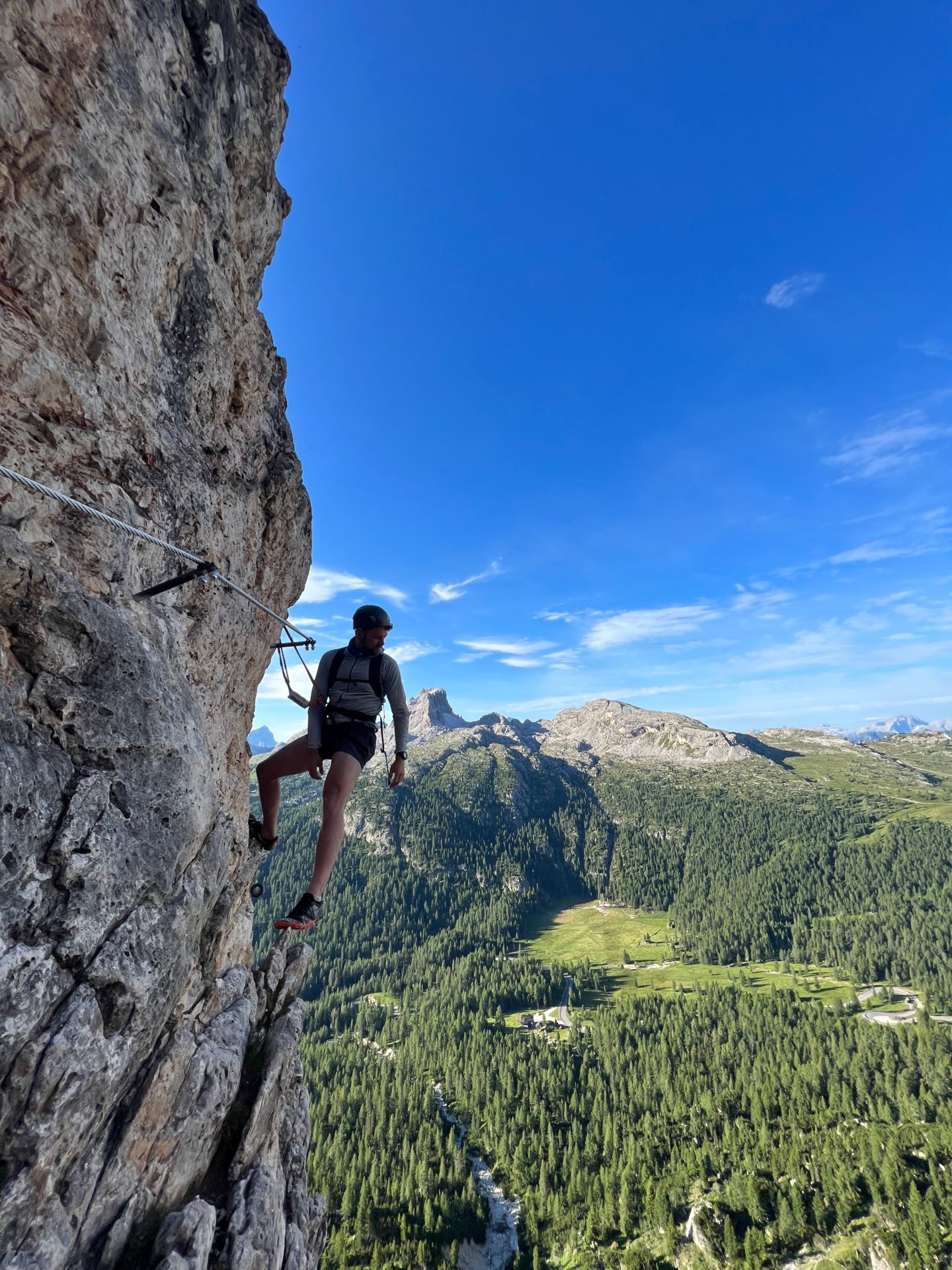
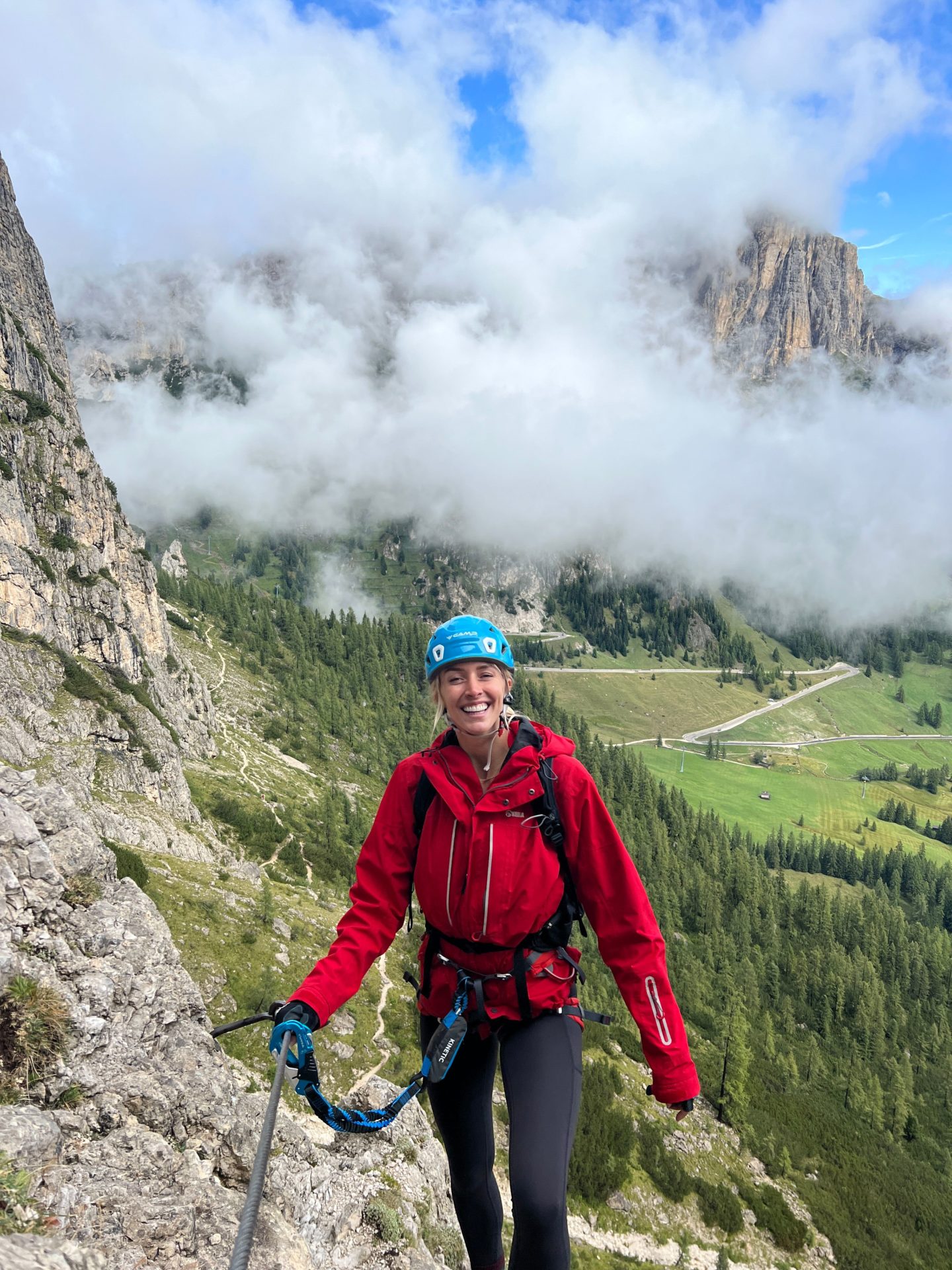
Who can do a via ferrata?
Who can complete a via ferrata depends on the route you choose, some are beginner and child friendly, some are more advanced. The main prerequisites before you attempt a climb would be:
- Having a head for heights. Via ferrata routes have varying levels of “exposure” but if you experience vertigo, it isn’t a sport I recommend for you.
- A good level of physical fitness. It’s a sport after all, so you need a good amount of both upper and lower body strength as well as cardiovascular fitness.
Equipment
In order to complete a via ferrata, you need specialist equipment. This can typically be rented from a nearby sports shop to the route you are taking, or you can invest in your own. A complete via ferrata kit includes:
- A climbing harness.
- A Y formation lanyard with two carabiners and an energy absorber. This attaches to your climbing harness & the cables.
- A helmet. To protect your head, for example from falling rocks.
I also recommend hiring or purchasing a good pair of climbing gloves to support your grip, and a sturdy but lightweight pair of hiking boots (or approach shoes). If you are renting gear, always check the condition and try it on before leaving the shop.
Where can you do a via ferrata?
There are via ferrata routes all around the world, but the highest density are in various areas across Europe such as Austria, Switzerland, Slovenia, The Pyrenees in France and The Dolomites in Italy.
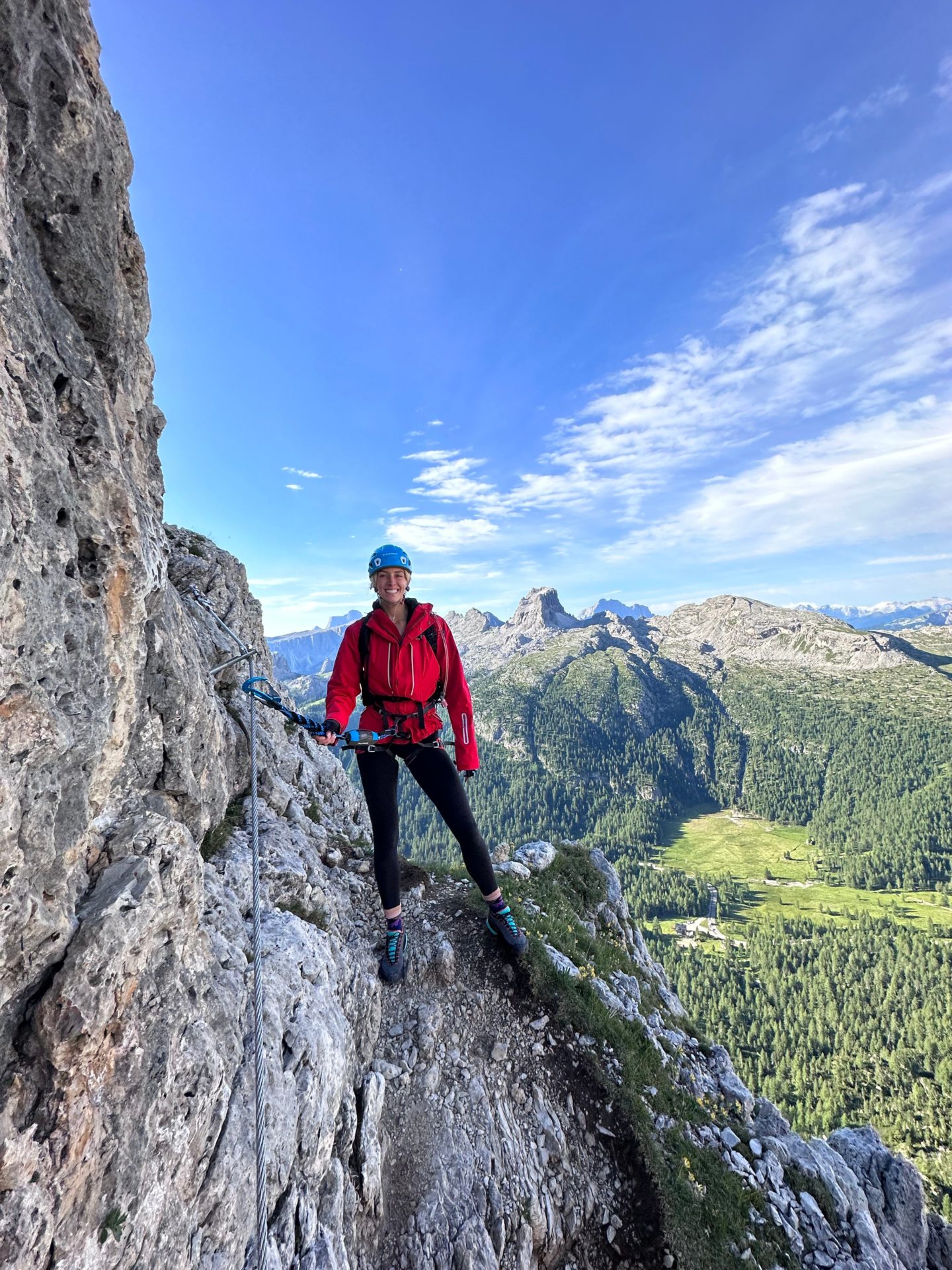
Do you need a guide?
If it is your first time taking on a via ferrata then you may consider hiring a mountain guide. Personally, I would recommend this for anyone and everyone who is a beginner. It’s a high risk sport and even just doing one climb with a guide may give you peace of mind for future adventures.
That being said, if you’re a seasoned hiker, have strong mountaineering skills and have done prior research on how to use via ferrata equipment then hiring a guide may be a waste of money – especially if you have an experienced friend going with you who can teach you the basics. You can always start with a few beginner paths and then build up to more intermediate or advanced ones.
Via ferrata technique basics:
I do recommend you hire a guide or go with an experienced on your first climb, but for reference here are some via ferrata basics when it comes to technique:
- As you approach the cables, all harnessed up with your lanyard attached, you need to clip both carabiners to a cable – doing this as far forward on the cable as you can.
- I recommend clipping the carabiners in opposite directions i.e. one upwards and one downwards.
- Once you start to climb, you will meet the first fixed cable loop (which is where the cable is attached to the mountain). To get past this you need to unclip one carabiner and clip it back into the other side of the loop. Then, repeat with the second carabiner – ensuring you always have one attached to the mountain.
- A good way to keep your carabiners within reach is to rest them in your palm and slide them along the cable as you climb. Although you’re welcome to let them hang freely if you’re climbing with both hands.
- If you happen to knock a rock or cause a fall of any item down the mountain, make sure you shout “ROCKS” or “BELOW” so climbers below you can prepare themselves.
How to choose a via ferrata route:
You can find via ferrata routes online through resources such as Ferrate 365 in The Dolomites, or through hard copy books such as Via Ferratas of the Italian Dolomites. There will be respective books and websites for any other European mountain regions you are exploring.
Via ferrata routes have different grading systems in each country. In the Dolomites they are graded with both numbers and letters, 1-6 and A-E. The number reflects the technicality of the climb. 1 means it is more of a hike with some simple exposed sections/scrambling. 5 or 6 are vertical or near vertical climbs with fewer hand and foot holds. The letter reflects how quickly you can get back to civilization in an emergency/how remote the climb is. An A climb would be a shorter climb, near to civilization with potentially some “escape routes” mid-climb. Whereas a C/D climb would be a longer route which is more remote with perhaps no escape routes. Make sure you choose a via ferrata that is an appropriate grade for you.
Another thing to check when picking a via ferrata route is the approach time and the descent route. Some approach times can be short and easy, which often leads to a busier climb and others can be longer and harder. The descent route can be a steep hike, a cable car or a long trail. Ensure you factor in time for the approach, climb and descent.
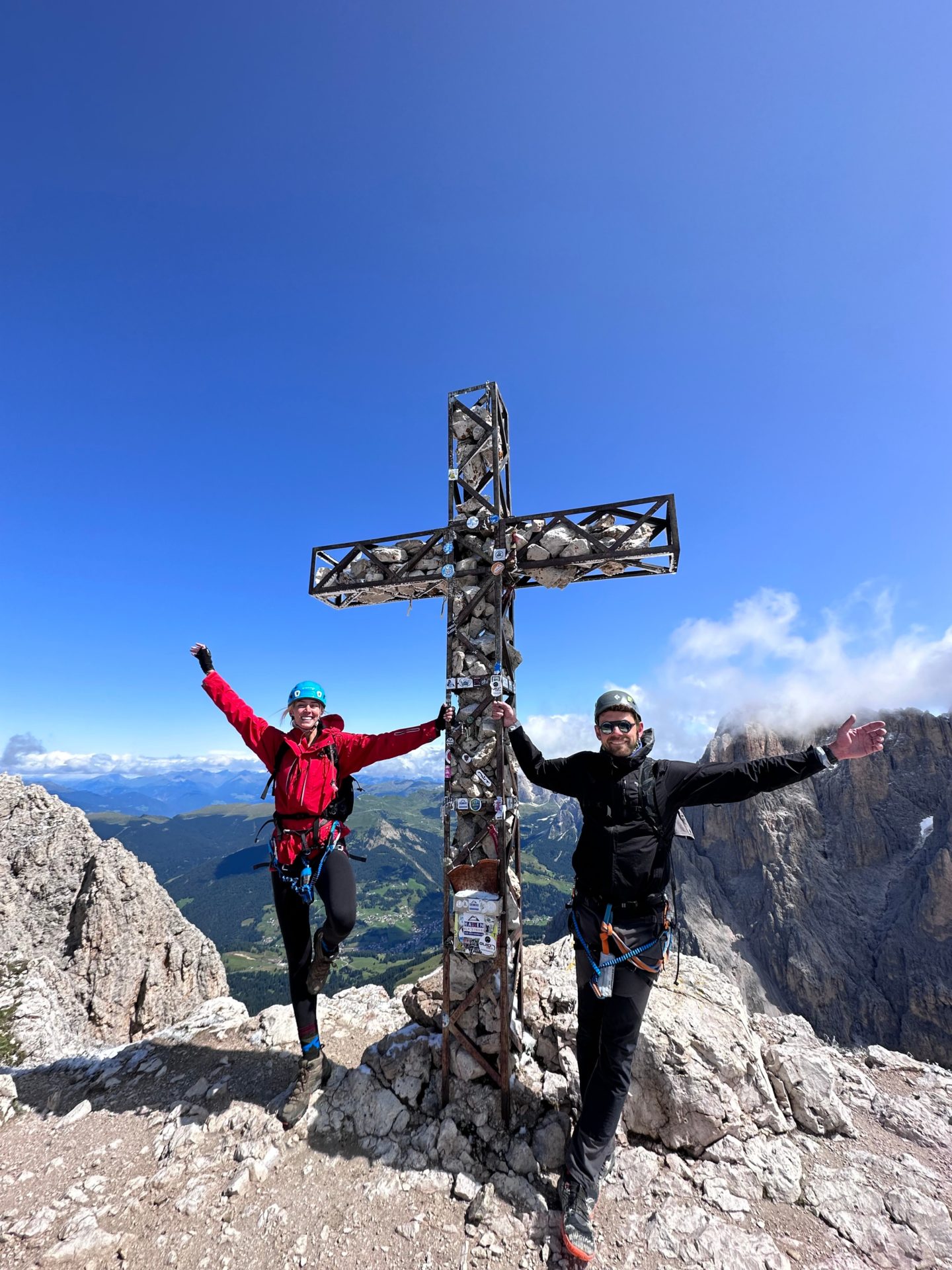
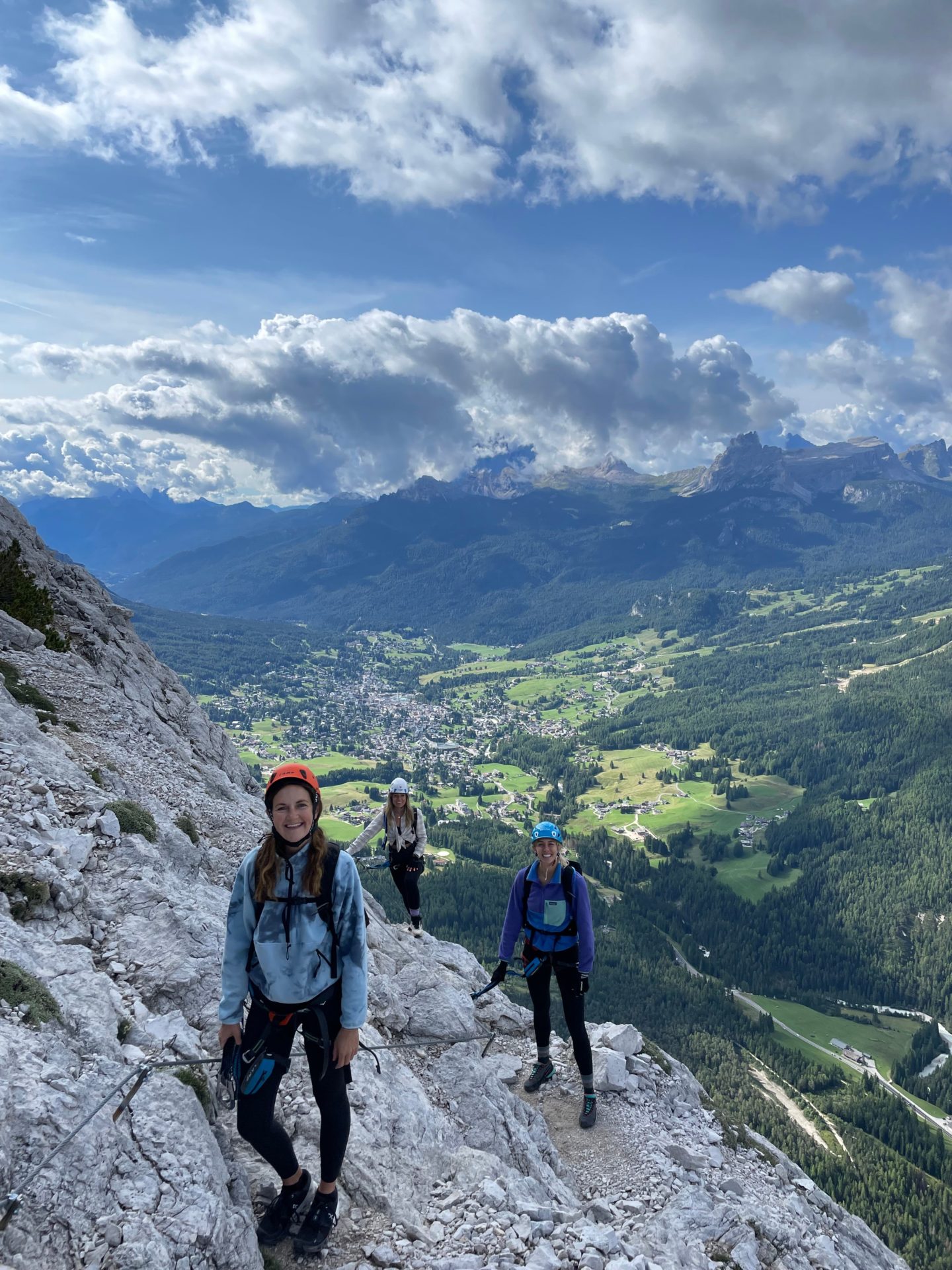
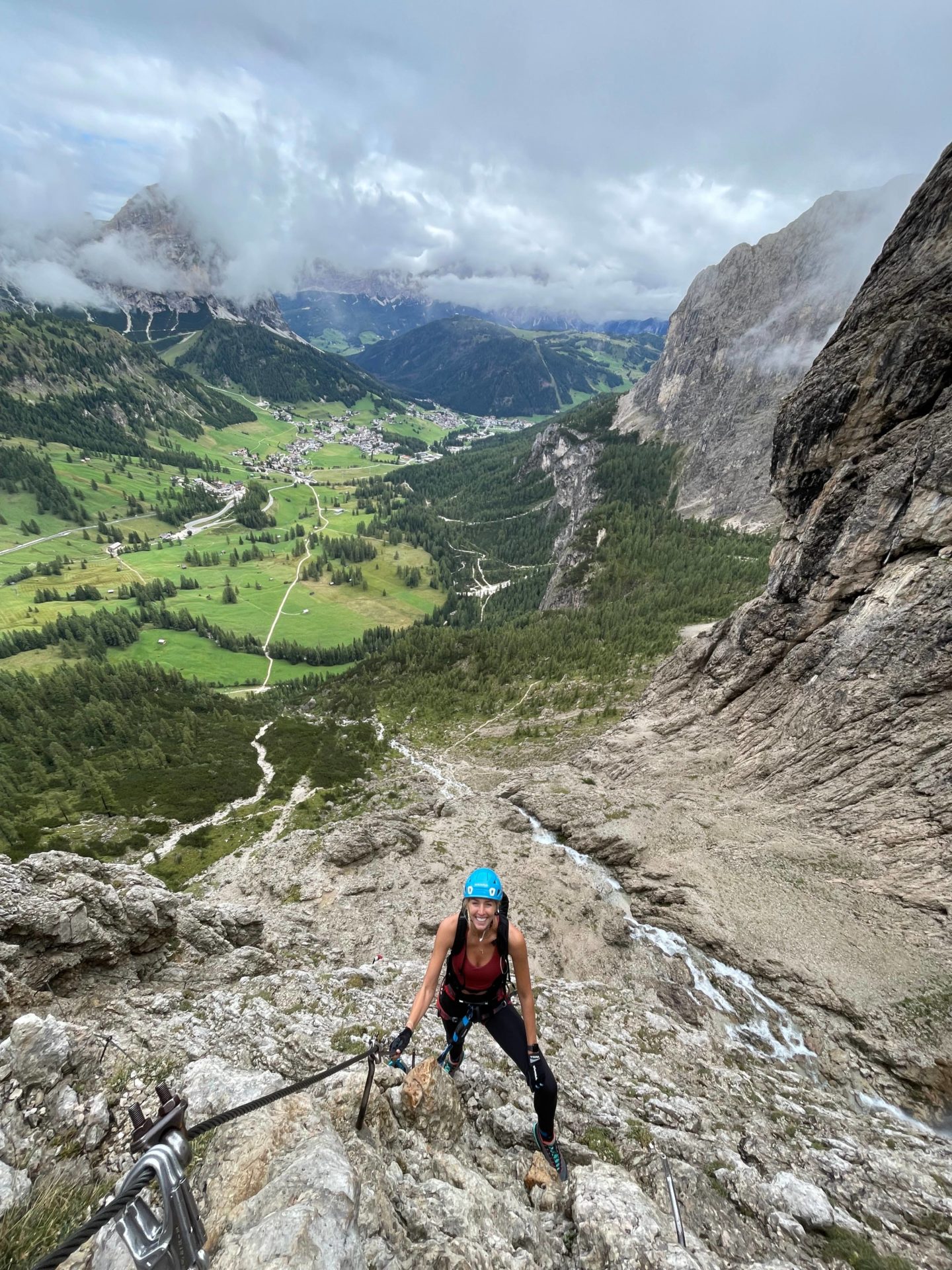
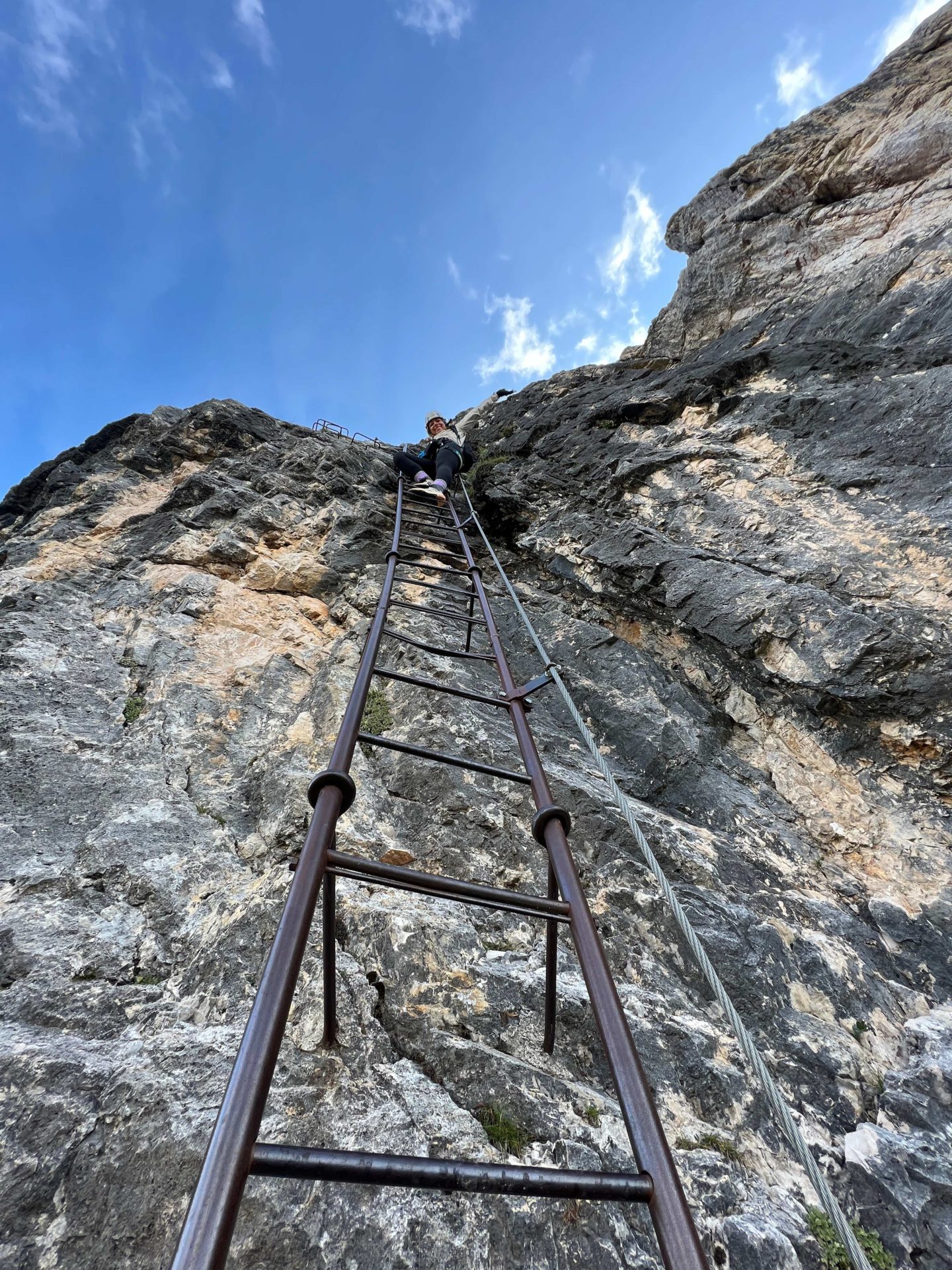
Via ferrata basics & things to consider:
Here are a few things to think about when you’re planning to do a via ferrata:
- Check the weather before you climb. Do not attempt a via ferrata in poor weather, and never do a via ferrata when there is a thunderstorm.
- Pack light, using the smallest backpack you can as it makes it easier to climb.
- Bring snacks, supplies and plenty of water.
- Climb in a small group. It is easier to ascend a via ferrata when there are less of you.
- Let someone know where you are and your estimated time you will finish the climb.
- Know your limits. Listen to your body and your mind when you’re on the mountain.
- If in doubt, choose a route you are confident you are fit, strong and capable enough to complete.
Via ferrata is an incredible, exciting and exhilarating way to connect with and explore the mountains. Once you have completed a few routes your confidence will soar, and you will be able to challenge yourself in new ways – building your physical and mental strength and resilience. I am sure you are going to love it as much as I do!
If you’re interested in hiking and climbing, you might like to read these:
- The Best Hikes In The Brenta Dolomites
- The Best Hikes In Picos De Europa: An Active Travel Guide
- The Top 5 Lesser Known European Hiking Destinations
- How To Get Fit For Hiking Mountains + An Example Hiking Training Plan
Good luck, happy climbing!
Zanna x

